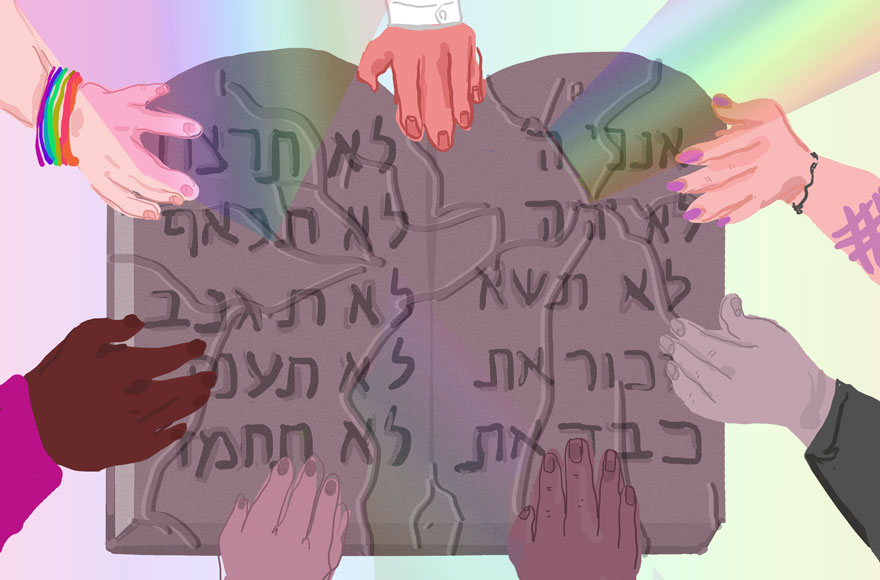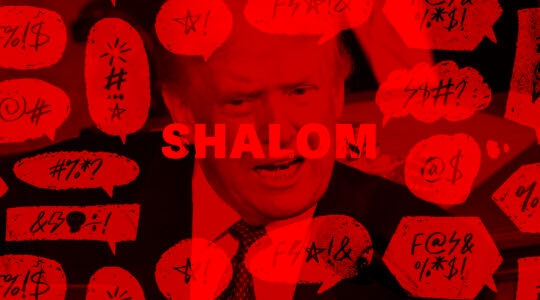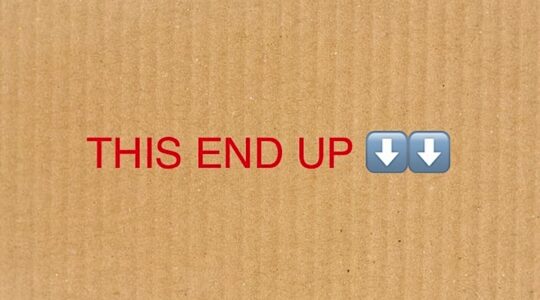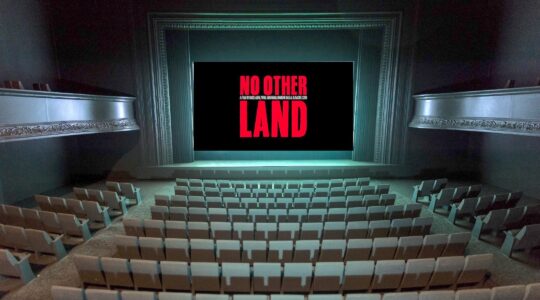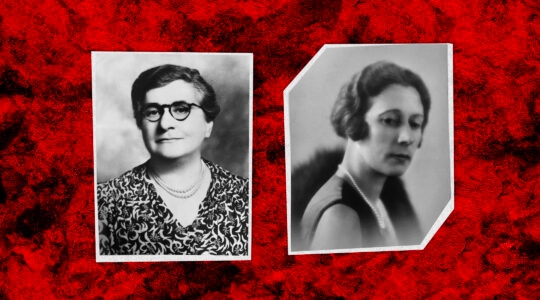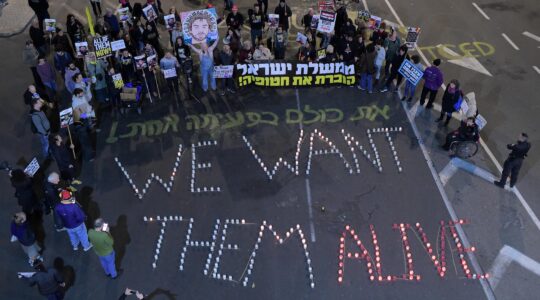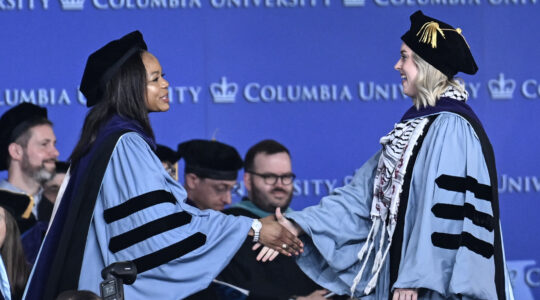(JTA) — The festival of Shavuot, which begins at sundown May 30, focuses on Moses receiving the tablets of the law. But an even more fascinating part of the story is when he shatters them. In an astounding midrash, or rabbinic commentary, Moses’ act is portrayed as the epitome of loyalty to the people, but also teaches God about community and continuity.
Descending Mount Sinai, Moses sees the golden calf that the Israelites made while he was gone, a mortal sin according to the Torah he’s carrying, so he decides not to give it to them. The midrash explains:
“Moses started to turn back, but the Elders saw him and ran after him. Moses held on to one side of the tablets, they held on to the other, but Moses was stronger. … He looked at the tablets and noticed that the writing had disappeared from them. ‘How can I give the Israelites blank tablets?’ he thought, and decided it would be better to break them instead.” (Avot D’Rabbi Natan, Ch. 2)
Moses realized there could be no Torah without a community to follow its teachings. Better the Torah be withdrawn than its recipients destroyed. God agreed and erased the laws from the tablets.
Blank tablets aren’t simply tablets lacking inscriptions. They are also tablets written in a language people no longer speak or understand. This midrash teaches that there is no value in Torah for Torah’s sake; its value derives from those who live its traditions. Even God embraced the primacy of the people, however imperfect we may be, over a “perfect,” but unachievable, Torah.
We’re not the first generation to manage the tension between the Torah and those who chafe against its demands. We’re also not the first — or the last — to disassemble and reassemble Torah to preserve Judaism and the Jewish people. When teaching this midrash to rabbis in New Jersey, Rabbi Donniel Hartman challenged us by saying that every generation must ask what part of the Torah they are willing to “break” to stand beside their people.
The tablets of our time are straining in a world where identity and affiliation are voluntary expressions shaped by choice rather than heritage. Communal boundaries are increasingly porous in our flat, networked society defined by access and collaboration, and in which religious hierarchies make less and less sense. Individuals personally curate their own Jewish lives, drawing from an array of cultural, intellectual, social, political, ethnic, spiritual, sexual and gender affiliations within and beyond the Jewish community. Diverse sources of authority and inspiration abound, shaping multifaceted, multivocal Jewish expressions in the global conversation about meaning, connection and faith.
In this setting, what are we prepared to dismantle and reconfigure to help more Jews feel at home in Judaism and the Jewish community, and motivate them to stay and contribute to a shared vision of the future? Opening “God-optional” synagogues, leading kirtan-inflected prayer, creating intermarriage rituals, “revolutionizing” b’nei mitzvah ceremonies, recognizing patrilineal descent, hosting Ramadan Iftar dinners — some communities are fracturing today’s tablets, illuminating our “post-ethnic,” “spiritual-but-not-religious” Jewish “sensibilities.”
Many shudder at the thought of “shattering” any part of the Torah, but we must remember where the shards of the tablets Moses broke were kept: in the Holy Ark, right beside the new ones. Among those shards lie such historic decisions as embracing matrilineality, banning polygamy and requiring a wife’s consent to divorce, as well as more recent “fractures” of tradition initiated for the sake of Jewish peoplehood like allowing converts to marry Kohanim, seminaries to ordain women, communities to enfranchise LGBTQ Jews and Jewish cemeteries to bury non-Jewish spouses.
The disassembling and reassembling of Torah in every generation is part of the sacred narrative and destiny of the Jewish people. It’s the source of our continuity, not our dissolution.
Will our tablets survive their collision with today’s culture and emerge recast into an authentic Torah for the future? Will the pieces from our dismantling take their place in the ark as part of the ongoing, sacred narrative of the Jewish people?
What’s at stake is more than our own Jewish fate. Judaism, like humanity itself, is at a crossroads. As economist and social theorist Jeremy Rifkin suggests, along with our potential to deepen spiritual and moral consciousness in a world of increasing connectivity comes the possibility of extending our empathic embrace to all forms of life and to the planet itself. If Judaism fails to reimagine itself, the consequences will be devastating; to some they already are. The consequences of humanity’s unwillingness to do the same could be more catastrophic. Creating a sustainable, open-sourced, non-hierarchical, collaborative Judaism is part of today’s global urgency to create a similarly sustainable planet.
This powerful narrative is awaiting inscription upon our generation’s tablets. It comes with considerable risk, some loss and the potential for great reward. Like the midrashic tug of war between the Elders and Moses over the ancient tablets, our Torah is wrenched between the weight of the past and the call of the future. Which will ensure its salvation and that of the people to whom it’s continually given: a tighter grip or a more encompassing embrace?
(Rabbi Adina Lewittes is the founder of Sha’ar Communities, a network that promotes an innovative, pluralistic approach to building Jewish identity by creating multiple portals into Jewish life and community.)
JTA has documented Jewish history in real-time for over a century. Keep our journalism strong by joining us in supporting independent, award-winning reporting.
